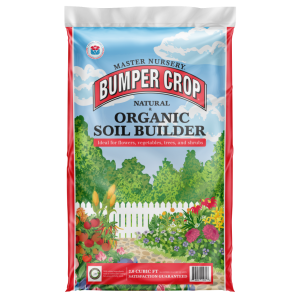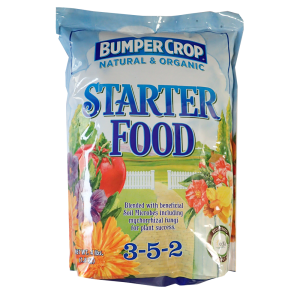Shrubs are vital to the home garden and any landscape design. They create a transition between low growing ground cover, annuals, perennials, and trees. With the proper care, shrubs, along with most plants, may be planted at any time of the year; however, the best time for shrub planting is in the Fall. Planting in the Fall allows the gardener to take advantage of the many benefits that this season has to offer. Shrubs planted at this time of year will benefit from:
- Cool air temperatures
- Warm soil temperatures
- Consistent soil moisture
- Reduced insect pressure
- Time to establish long, strong roots
SHRUB SELECTION
It’s easy to fall in love with scores of shrubs, some for their flowers, some for their foliage, but it is prudent to check with your local Master Nursery® Garden Center for their expert advice regarding which shrubs will perform the best in your location. When asking for assistance in selecting shrubs, it is wise to provide as much information as you can to ensure a good match for you and your landscape. The following information will be helpful to your local nursery professional:
- Your personal likes and dislikes
- The size of the area allotted for a shrub
- Soil pH
- Exposure or how much sun or shade the planting site receives
- Soil moisture if too wet or too dry
- Soil structure if heavy clay or very sandy
POPULAR SHRUBS
Although these particular shrubs are not recommended for every landscape situation, we’ve listed some of our favorites that can be grown in a wide variety of conditions and hardiness zones. Some are deciduous; some are evergreen. Some are sun loving; some are shade tolerant. Some are flowering; some are grown for their colorful foliage. There are numerous species and varieties of each shrub listed, and your local Master Nursery® Garden Center’s educated staff will help you select the plants best suited to your situation.
- Abelia
This gorgeous, semi-evergreen shrub throws out oodles of soft pink flowers from Summer through Fall. It prefers slightly acidic, rich soil that drains well. Give it full sun and grow it successfully in USDA hardiness zones 4 to 9. - Azalea
A shade loving, Spring blooming, evergreen shrub that flowers in shades of white, pink, rose, red and purple and favors acidic soil rich in organic matter. Azaleas will grow well in USDA hardiness zones 5 to 9.
- Butterfly Bush
Summer flowering and sun loving, this shrub is a cutback shrub, meaning it flowers on new wood and can be cut back each year, late in the season to promote new growth for the following year. Butterfly Bush blooms are long, slender panicles in white, pink, magenta, purple, and blue. Grow in the sun in just about any well amended soil in zones 5 to 9.
- Caryopteris
Late Summer through early Fall, caryopteris is loaded with cornflower blue, lavender, or purple flowers along long arching branches. Grow caryopteris in a full sun location in soil that is well drained and pH neutral. This cutback shrub has unusual gray-green leaves and may be grown in zones 4 to 8.
- Forsythia
The quintessential Spring shrub, Forsythia heralds the season with bright yellow flowers. Grow this shrub in USDA hardiness zones 5 to 8. This tough plant will do well in just about any type of soil pH and structure but will have its best start in soil rich in organic matter. Rejuvenate this hardy shrub by cutting it back to the ground.
- Hydrangea
A classic! This flowering shrub likes part-sun, and many thrive in salty coastal conditions. Hydrangea is available in numerous species and cultivars, so there is a selection that will do well in all USDA hardiness zones from 3 to 10. Some bloom on old wood, some on new wood. This information is vital to knowing when to prune a particular hydrangea. Hydrangeas should be grown in fertile, acidic soil and benefit from some afternoon shade in hot climates.
- Viburnum
Spring blooming and often producing Summer or Fall berries, Viburnums are available in over 150 species and almost unlimited cultivars, guaranteeing that there is a viburnum suitable for every landscape. Viburnums can grow in a wide variety of situations but prefer slightly acidic, rich, well-drained soil. You’ll find a viburnum to love and grow in USDA hardiness zones 2 to 9.
- Lilac
An American standard, lilacs provide early season, fragrant flowers in white, pink, lavender, and purple. Long-lived, Lilacs are perfect in a full sun situation and thrive in USDA hardiness zones 2 to 8. Lilacs will grow their best in slightly alkaline, moist, well-drained soil rich in organic matter.
- Ninebark
Grown for its striking foliage in unusual colors from chartreuse to copper, Ninebark is the perfect, all-purpose shrub that is not fussy, likes full sun and is also cherished for its Spring flowers. Ninebark may be grown in USDA hardiness zones 2 to 8. Ninebark is tolerant of many soil conditions but prefers moist, well-drained soil that is neutral in pH to slightly acidic.
- Rose of Sharon
This floriferous old-time shrub is valued for its colorful blooms in white, pink, magenta, lavender, and blue when little else is blooming during the dog days of summer. This is one tough shrub that, once established, is drought tolerant. Rose of Sharon may be grown in just about any soil but will put its best foot forward if planted in rich, moist, well-drained soil with an alkaline to neutral pH and in zones 5 to 9.
- Spirea
Spirea is a very easy-to-grow, versatile, Spring blooming shrub that is usually planted in drifts. With so many variety choices available, you are sure to find a Spirea shrub to fit your landscape needs in zones 3 to 9. If planted in soil with good fertility that drains well, Spirea will give you years of pleasure with little yearly effort on your part.
- Weigela
Weigela, a deer resistant shrub, loves rich, well-draining soil enriched with plenty of compost. This old-fashioned plant has plenty of staying power. Tiny tubular flowers run the length of beautifully arching stems in the late spring in shades of pink, magenta, red, and white. Many varieties have colorful and variegated leaves. Butterflies and hummingbirds love weigela. This plant may be successfully grown in hardiness zone 2 through 8.
PLANTING SHRUBS
- The best time to plant shrubs is in the Fall.
- Dig the planting hole just as deep but two times wider than the root ball.
- Mix the excavated soil with at least 20 to 30% of its volume with Master Nursery® Bumper Crop® Soil Builder [Eastern & Midwestern Regions | Western Region] and set aside.
- Position the root ball in the hole, making sure that the plant is facing best side forward and that the root ball sits level or just slightly higher than the surrounding soil surface.
- Backfill with excavated soil mixture while gently firming soil as you do.
- Create a saucer with the excess soil to direct water to the root zone.
- Sprinkle the recommended amount of Master Nursery® Bumper Crop® Starter Food around the root zone of the plant to help your shrub establish a long, strong, healthy root system.
- Water well.
- Mulch to help with soil moisture retention and weed suppression.
There you have it! Sensational shrubs can grace your landscape for years to come if you simply select them properly and give them an advantageous start by amending the soil with Master Nursery® Bumper Crop® Soil Builder [Eastern & Midwestern Regions | Western Region] and fertilizing with Master Nursery® Bumper Crop® Starter Food. Proper planting and soil amending is key to shrub health and longevity, ensuring proper nutrition, sufficient organic matter, and good drainage as they settle in their new home and for the many years to come.
Need more gardening inspiration? Click here.






